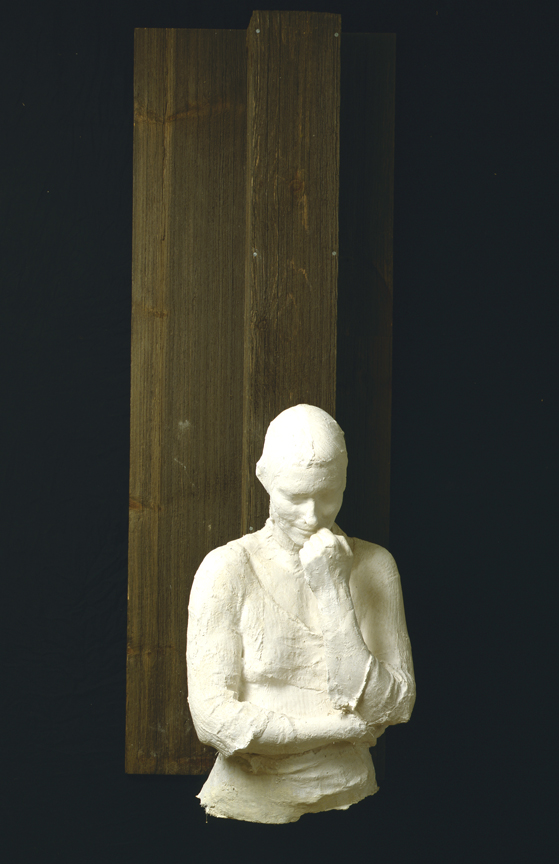
Girl Against a Post
George Segal
Rising to prominence in the 1960s, Segal is best known for his haunting installations of plaster figures cast from life. Segal studied art at the Cooper Union and the Pratt Institute of Design, later studying philosophy and literature at Rutgers University. During the 1950s he painted in an Abstract Expressionist style but began to turn his attention to sculpture in 1958. In 1961, he began doing casts of friends and family by wrapping them in medical bandages soaked in plaster. He also began experimenting with incorporating the resulting life-size sculptures into installations that utilized real objects. This process led to staged semi-autobiographical scenes drawn from everyday life that produce an unsettling experience for the viewer. The familiar becomes unfamiliar as the naturalism of Segal's figures is offset by their ghostlike appearance.
"Girl Against a Post" reveals these effects as a plaster torso is set against a real wooden post. The difference between the materials creates a tension that is accentuated by the way the girl's figure is cut off at the waist. The sense of how closely this figure relates to our world is heightened by her contemplative pose. Segal utilized these techniques in an extraordinary body of work that includes installations to commemorate the Civil Rights movement, the gay rights movement, and the Holocaust.
Artist
Date of Birth
(1924-2000)
Date
1973
Medium
Plaster and cloth with wood
Dimensions
72 1/4 x 21 x 21 1/2 in. (183.515 x 53.34 x 54.61 cm.)
Accession #
1974.9.2
Credit Line
Funds provided by the National Endowment for the Arts, the Pennsylvania Academy's Women's Committee, and an anonymous donor
Copyright
© The George and Helen Segal Foundation/Licensed by VAGA at Artists Rights Society (ARS), NY
Category
Subject
More by
We're so excited you're planning to visit PAFA!
Make time for art — visit us Thursday to Sunday.
Before reserving your tickets, please review helpful information about museum hours, accessibility, building access, and special admission programs.
If you have any questions, feel free to reach out to us at visitorservices@pafa.org — we’d love to help!